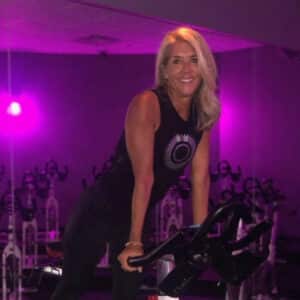The phrase “no pain, no gain” is commonly used as a motivational mantra in the fitness world. As a trainer, I firmly believe in pushing yourself past your comfort zone. But I don’t believe in pushing yourself into an unhealthy state. I believe exercise should be fun (or at least somewhat enjoyable). It should leave you feeling strong, healthy, and accomplished. Not miserable, discouraged, or beaten up.
So how much is too much? That varies from person to person, but the best way to determine whether you should go harder or go home is to look at how your body recovers post-workout. Some soreness and fatigue are par for the course, but the bounce back should be relatively quick. Pay attention if your exhaustion or soreness lasts for days or you experience dizziness or nausea post-workout.
Those symptoms and others are your body’s way of telling you that something you’re doing isn’t working. Typically, it’s nothing that a few modifications to your training and lifestyle won’t fix. Still, it’s always a good idea to consult your doctor to ensure nothing more serious is happening.
Delayed Onset Muscle Soreness

No one likes to wake up to sore, stiff muscles. But it happens, especially when you are just starting a workout program. Why? Because for muscles to grow, you have to apply stress, which results in microscopic tears in the fibers. As the fibers repair, the muscle becomes stronger. So, to use more gym lingo, you’ve got to break it down to build it up! Usually, the pain subsides within a day or two. However, in some cases, it increases 48 to 72 hours post-workout. Known as Delayed Onset Muscle Soreness, or DOMS, this typically occurs when you go overboard, doing too much too soon. Jumping into a half-marathon when you’ve never run more than three miles, for example, or lifting more weight than you can handle.
While it’s not necessarily dangerous, it is a sign that you may need to back off, slow down, and return to a gradual increase in your activity levels. If the soreness lasts for more than 72 hours or is accompanied by a lack of urination or dark urine, seek medical attention, as these can be signs of a more severe kidney condition. Try foam rolling, stretching, and warming up before your workout to avoid or alleviate sore muscles.
Exercise Fatigue Syndrome

It sounds like a phony excuse to get out of gym class, but Exercise Fatigue Syndrome (EFS) is real. More than just that “spent” feeling you get after your favorite spin class, EFS is characterized by extreme lethargy and loss of energy. According to the Jacksonville Orthopaedic Institute, it may be accompanied by other symptoms like headaches, dizziness, nausea, shortness of breath, elevated heart rate, and muscle and joint pain during exercise. While that sounds like a good reason to skip the gym and binge Netflix, the good news is that several factors within your control can restore your energy.
The first is nutrition. Ensure you’re fueling your body with the proper nutrients like proteins, carbs, and healthy fats and drinking plenty of water. Next, don’t overtrain. Yes, it’s exciting when you start to see results, but sometimes more is just more. Schedule rest days into your workout routine to give your body time to recover and repair. And speaking of rest, lack of sleep plays a significant role in your daily energy. Aim for at least 7-8 hours a night for optimal results. If you do all of the above and are still suffering, check with your healthcare professional to rule out any thyroid problems, cardiovascular issues, or underlying illnesses that can affect your energy and performance.
Heart Rate Recovery

There are few things I love more than a workout that gets the heart pumping, blood flowing, and sweat pouring. Interval and HIIT workouts are a great way to accomplish that. There’s nothing like a 30-second burst of speed to elevate your heart rate and torch some calories. However, it’s not that 30 seconds of anaerobic activity that determines your fitness level. How quickly you recover from it tells you what you need to know about your heart health. Your Heart Rate Recovery (HRR) is one of the most effective ways to determine whether you are at increased risk for heart disease or a heart attack.
HRR is not one size fits all. An elite athlete, for example, will likely have a much quicker HRR time than the average person. Age, genetics, and lifestyle can also influence HRR, even in people who exercise regularly. So, how do you determine your HRR? In today’s high-tech world, information is literally at your fingertips for almost all fitness trackers.
If your HRR is slower, you can do a few things to improve it. Start by moving your body more regularly to build your cardiovascular endurance. The CDC recommends 150 minutes of moderate-intensity physical activity and two days of strength training per week for adults. That can include walking, running, cycling, swimming, and any other activity that elevates the heart rate. Other ways to improve your HRR include following a heart-healthy diet, maintaining a healthy weight, and, if you are smoking, stop! If you are otherwise healthy and your HRR is still slow or is accompanied by shortness of breath, dizziness, nausea, or chest pains, seek medical attention. Your cardiovascular health is not something to leave to chance.
Exercise is always a good idea, but too much of a good thing is possible. That’s not an excuse to quit; it is permission to listen to your body. Don’t ignore the signs and signals it’s giving you; if a problem persists, see your doctor. You only get one body to go through life. Honor and take care of it; it will take care of you.
Read More:
Exercise for Depression: Swimming in Open Water









